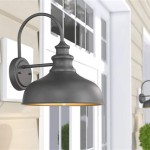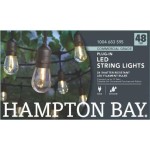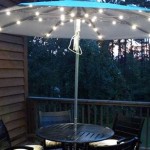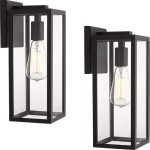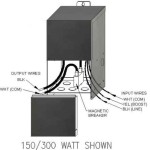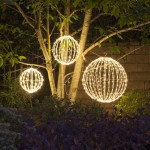How Close Can an Outdoor Fireplace Be to a House?
Determining the appropriate distance between an outdoor fireplace and a house is a crucial aspect of safe and responsible outdoor living. Numerous factors influence the minimum required distance, including local regulations, the materials used in the fireplace construction, the prevailing wind conditions, and the type of fuel burned. Adhering to these guidelines mitigates the risk of fire hazards, structural damage to the house, and potential health issues arising from smoke inhalation. Furthermore, understanding the science behind heat transfer and combustion byproducts is essential in making informed decisions about outdoor fireplace placement.
The primary concern in determining the proximity of an outdoor fireplace to a house is fire safety. Embers and sparks, carried by wind, can readily ignite flammable materials on or near the house, such as siding, roofing, dry vegetation, and outdoor furniture. Radiant heat from the fireplace can also damage siding and other exterior components over time, leading to costly repairs. Moreover, improper ventilation can cause smoke to enter the house, posing a health risk to occupants. Therefore, careful consideration of all these potential hazards is paramount before installing an outdoor fireplace.
Understanding Local Regulations and Building Codes
Local regulations and building codes are the first and most important resource for determining the permissible distance between an outdoor fireplace and a house. These regulations are designed to protect public safety and property, and they often vary significantly depending on the municipality. Contacting the local building department or fire marshal is essential to obtain accurate and up-to-date information on specific requirements. These regulations typically address issues such as setbacks from property lines, minimum distances from structures, and requirements for fire suppression equipment.
Many jurisdictions adopt model building codes, such as the International Residential Code (IRC) or the National Fire Protection Association (NFPA) standards, but they may amend or modify these codes to reflect local conditions and priorities. For example, areas prone to wildfires may have stricter regulations regarding outdoor burning and fireplace placement. Some municipalities may also require permits for the construction or installation of outdoor fireplaces, which may involve inspections to ensure compliance with safety standards. Failure to comply with local regulations can result in fines, penalties, and even the forced removal of the fireplace.
It is also important to consider Homeowners Association (HOA) rules when planning to install an outdoor fireplace. These organizations often have their own set of restrictions regarding outdoor structures, including fireplaces, which may be more stringent than local government regulations. HOA guidelines may address issues such as the size, style, and location of the fireplace, as well as restrictions on the type of fuel that can be burned. Obtaining approval from the HOA before starting construction is crucial to avoid potential conflicts and legal issues.
Evaluating Fireplace Construction and Materials
The construction materials and design of the outdoor fireplace significantly influence its safety and the required distance from the house. Fireplaces constructed with non-combustible materials, such as brick, stone, or concrete, generally pose a lower fire risk than those made with wood or other flammable materials. The thickness and insulation of the fireplace walls also play a role in minimizing heat transfer to surrounding structures. A well-constructed fireplace with adequate insulation will radiate less heat and reduce the risk of igniting nearby combustible materials.
The presence of a chimney or flue is another important factor to consider. A properly designed chimney effectively vents smoke and combustion gases away from the house, reducing the risk of smoke inhalation and preventing the accumulation of soot on exterior surfaces. The height of the chimney should be sufficient to ensure adequate draft and prevent downdrafts that could force smoke back towards the house. Local regulations often specify minimum chimney heights based on the distance to nearby structures and the prevailing wind conditions.
The type of fuel burned in the fireplace also affects the fire risk and the required distance from the house. Wood-burning fireplaces produce more smoke and embers than gas-burning fireplaces, and therefore typically require a greater setback distance. The type of wood burned also matters; dry, seasoned hardwoods produce less smoke than wet or resinous softwoods. Gas-burning fireplaces, such as those fueled by propane or natural gas, offer greater control over the flame and produce less smoke and embers, allowing for closer placement to the house in some cases. However, it is still essential to follow manufacturer's recommendations and local regulations regarding gas line installation and safety precautions.
Assessing Environmental Factors and Safety Precautions
Environmental factors, particularly wind direction and prevailing wind speeds, play a critical role in determining the safe distance between an outdoor fireplace and a house. Wind can carry embers and sparks considerable distances, increasing the risk of igniting flammable materials. Therefore, it is crucial to consider the prevailing wind direction when siting the fireplace, positioning it so that smoke and embers are carried away from the house and any other nearby structures. In areas with strong winds, it may be necessary to increase the setback distance to mitigate the risk of fire hazards.
The presence of nearby vegetation is another important consideration. Dry grass, leaves, and shrubs can easily ignite from stray embers, creating a fire hazard. It is advisable to clear a safety zone around the fireplace, removing any flammable vegetation within a specified radius. The size of the safety zone should be determined based on the prevailing wind conditions and the type of fuel burned in the fireplace. Maintaining a regularly watered lawn or using non-combustible landscaping materials, such as gravel or pavers, can further reduce the risk of fire spread.
In addition to setback distances and environmental factors, several safety precautions can help minimize the risk of fire hazards associated with outdoor fireplaces. Installing a spark arrestor on the chimney can prevent embers from escaping and igniting nearby materials. Keeping a fire extinguisher or garden hose readily accessible is crucial for quickly extinguishing any accidental fires. Never leaving a fire unattended and ensuring that it is completely extinguished before leaving the area are essential safety practices. Periodic inspections and maintenance of the fireplace, including cleaning the chimney and checking for cracks or damage, can also help prevent potential problems.
Furthermore, consider the impact of smoke on neighbors. Smoke drifting into neighboring properties can be a nuisance and a health hazard, especially for individuals with respiratory problems. Positioning the fireplace so that smoke is directed away from neighboring houses and avoiding burning during periods of calm wind can help minimize these problems. Be mindful of local regulations regarding outdoor burning and smoke emissions, and be considerate of the impact of your outdoor fireplace on the surrounding community.
Ultimately, determining the safe distance between an outdoor fireplace and a house requires a comprehensive assessment of local regulations, building codes, fireplace construction, environmental factors, and safety precautions. Consulting with a qualified contractor or building inspector can provide valuable guidance and ensure that the fireplace is installed safely and in compliance with all applicable requirements. By taking these factors into consideration and implementing appropriate safety measures, homeowners can enjoy the warmth and ambiance of an outdoor fireplace without compromising the safety of their property or the health of their neighbors.

Siting An Outside Fireplace

Outdoor Fireplaces And Firepits Faq Mike S Evergreen

Patio Life Building An Outdoor Fireplace Into The Side Of Our Garage Part 2 Construction

7 Outdoor Fireplace Design Ideas For Every Budget Big Rock Landscaping

Home Is Where The Hearth With An Outdoor Fireplace Rockhaven Homes

Diy Outdoor Fireplace Ideas

Winter Warmth With Outdoor Fireplaces 405

Is It Safe To Use A Fire Pit Under Covered Patio Woodlanddirect Com

How We Built Our Outdoor Fireplace On Patio Porch

Choosing The Right Outdoor Fireplace Flawless Masonry

